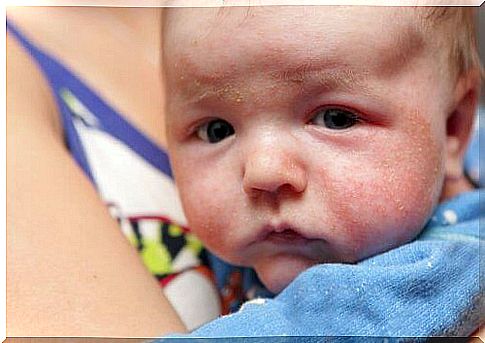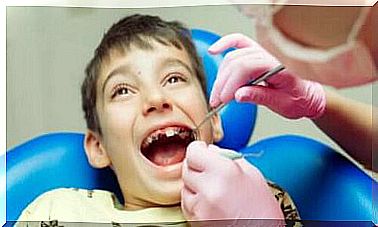Impetigo In Children: A Highly Contagious Skin Infection

Contagious impetigo is a skin infection that can be seen frequently in childhood, especially in preschool children. This pathology is divided into two types: bullous impetigo and non-bullous impetigo , which make up a large percentage of cases. If you want to learn more about this disease, do not miss this in-depth article.
Clinical forms of contagious impetigo
Both the diagnosis and the treatment chosen by the doctor are determined on the basis of clinical criteria, based mainly on the rash, which is its main feature. Impetigo can be caused by bacteria such as streptococci and staphylococci. As we mentioned earlier, two types are known.
Bullous impetigo
This type of contagious impetigo has the characteristic of presenting itself with the presence of superficial bubbles from 5 to 30 mm in diameter. In particular, they can easily crack and result in a thin crust, where a peeling collar appears. It usually significantly affects the trunk of the child, but can also appear on the genitals, and in rare cases an enlarged lymph nodes can also be observed (in this case we speak of localized lymphadenopathy).
Non-bullous impetigo
This second type of impetigo begins with the appearance of vesicular or pustular lesions with a diameter between 1 and 4 mm. Again, the bubbles can break very easily, resulting in fairly thick crusts. In this case, the lesions usually appear on the face, legs and arms and can cause itching in the affected area.

How to prevent impetigo?
Impetigo usually spreads easily if preventative measures are not taken and normal hygiene habits are not followed. Even if your child has not yet contracted this disease, it is essential to follow some recommendations:
Recommendations for preventing infection
- Wash your hands and shower regularly.
- Trim and keep baby’s nails clean.
- Dry the baby’s saliva properly so that there is no residue around the mouth as this could promote the appearance of the problem.
- Keep the skin hydrated with creams indicated by the pediatrician.
- Consult your doctor immediately when rashes are observed.
Recommendations after the infection
- Do not exchange towels, clothes or other personal items.
- Do not touch or scratch the damaged skin, this could make the situation worse.
- Wash your hands whenever you come into contact with injuries caused by the disease.
- Take care of the cleanliness of the clothes, towels and sheets used by the child.
Impetigo treatment
If parents notice an unusual rash on their child’s skin, it is essential to consult with the pediatrician, who will determine the indicated treatment for the child. On the other hand, a good diet is recommended, which will help improve the skin condition more quickly.
As far as nutrition is concerned, in fact, we suggest you offer your baby fruit rich in vitamins A and C as well as foods to improve the immune system, such as fish. Keep in mind that a doctor’s advice will be required to plan an adequate diet to combat the infection. Similar speech with regard to medicines: it is not recommended to resort to self-medication and each drug must be prescribed by the pediatrician.
Prognosis and complications
From the moment the treatment begins, you can quickly observe an improvement in the skin and the disappearance of lesions, already starting from the next 24-48. In the event that there are no appreciable significant changes, complications may have occurred which, again, will need to be referred to the specialist. In particular, impetigo can cause:
- Post-infectious glomerulonephritis : This is a kidney disease that occurs after infection and triggers albuminuria (the excessive expulsion of albumin in the urine) or can lead to a nephritic syndrome.
- Nephritis : inflammation affecting different parts of the kidneys (glomerulus, tubules, or interstitial tissue).
- Deep invasion : not having a good state of health, bacteria can penetrate the superficial layers of the skin. This causes infections such as infectious cellulitis or erysipelas, with fever and widespread malaise.
It is wrong to think that skin diseases are less contagious and dangerous than others. As we have seen in the case of impetigo, its form of transmission is very broad. It is therefore necessary to pay particular attention to the care of hygiene in children, especially under 10 years and to always maintain the highest standards of cleanliness, inside and outside the home, avoiding the use or sharing of personal items.









